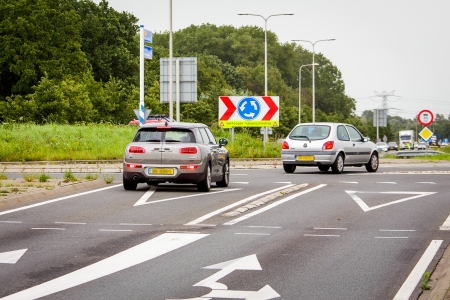In the urban area, an average 60% of cyclist fatalities occur at intersections, and outside the urban area an average of 49% (in 2015-2019). For cyclists, conventional intersections are generally less safe than roundabouts (also see the section How safe are roundabouts to cyclists?). Intersections with separate bicycle facilities are safer than intersections without these facilities (for an overview of bicycle facilities at intersections, see the section How to make intersections safer for cyclists?)
A second factor contributing to cyclist safety at intersections is the blind spot of (particularly) trucks. Most blind spot crashes are ‘classical’: a truck turning right and a cyclist going straight ahead. Most blind spot crashes occur in the urban area, and especially when the cyclist was riding on a bicycle track [25]. Most of these crashes occur at bicycle tracks at a distance of less than one metre from the carriageway. Half of the blind spot crashes occur at signalised intersections.
